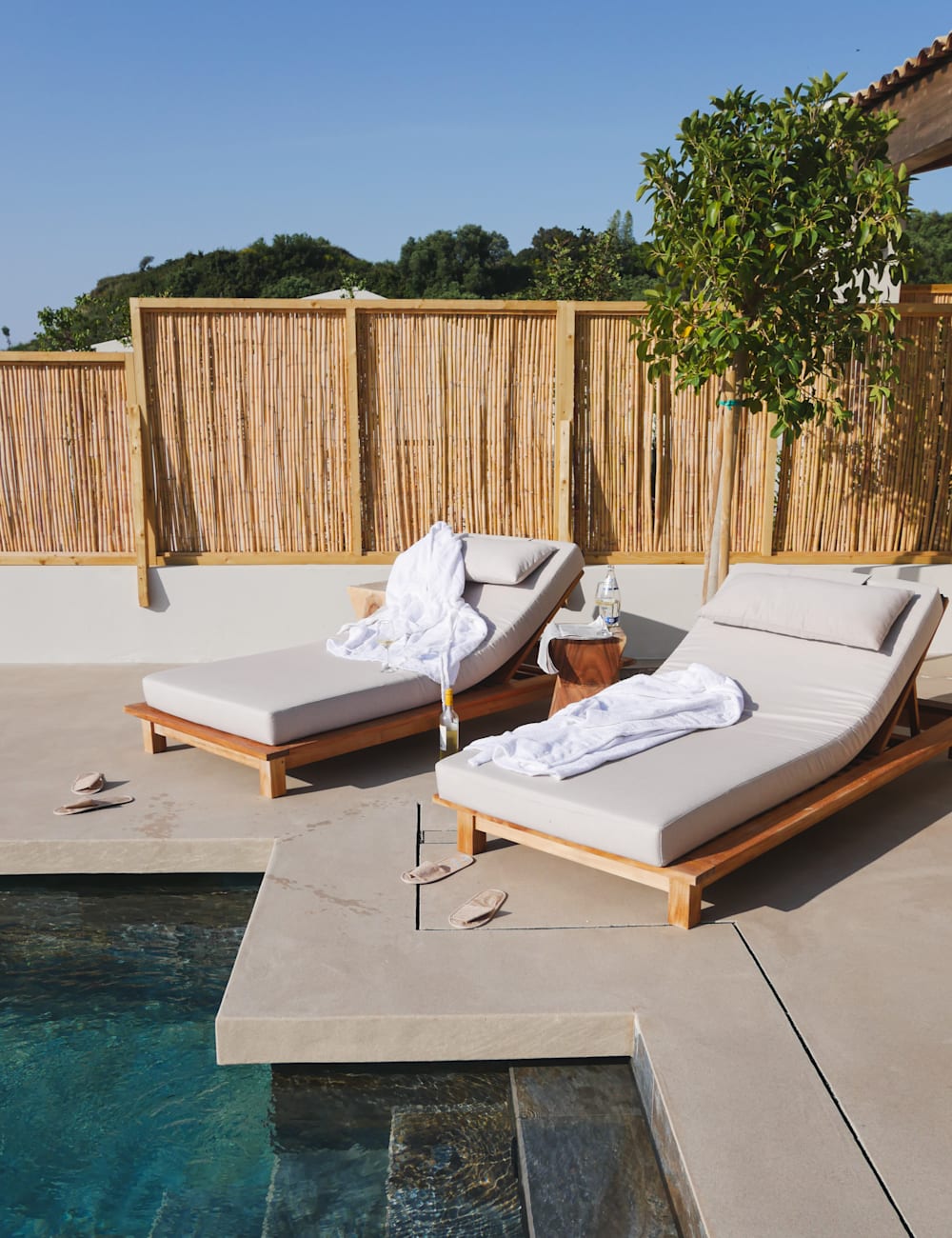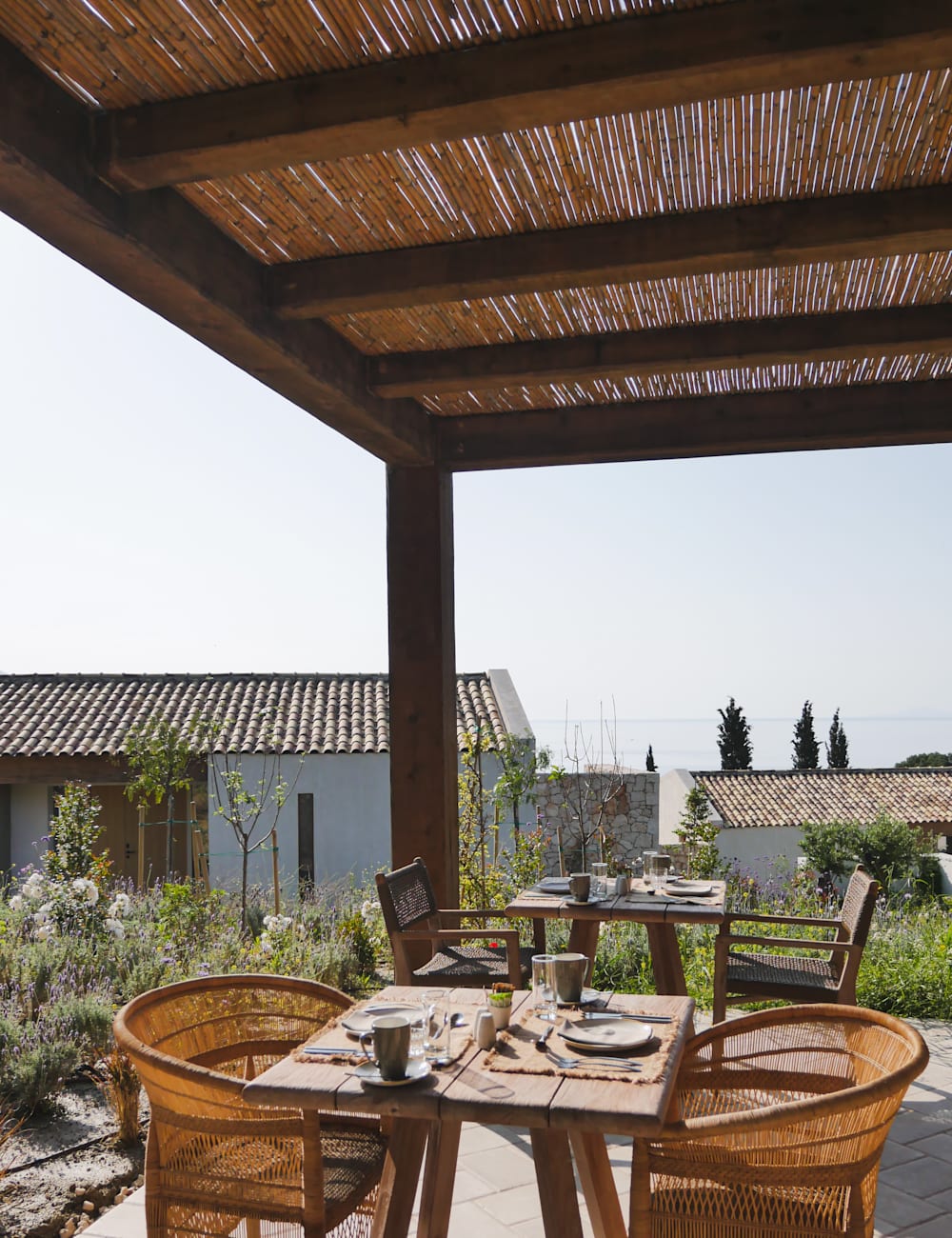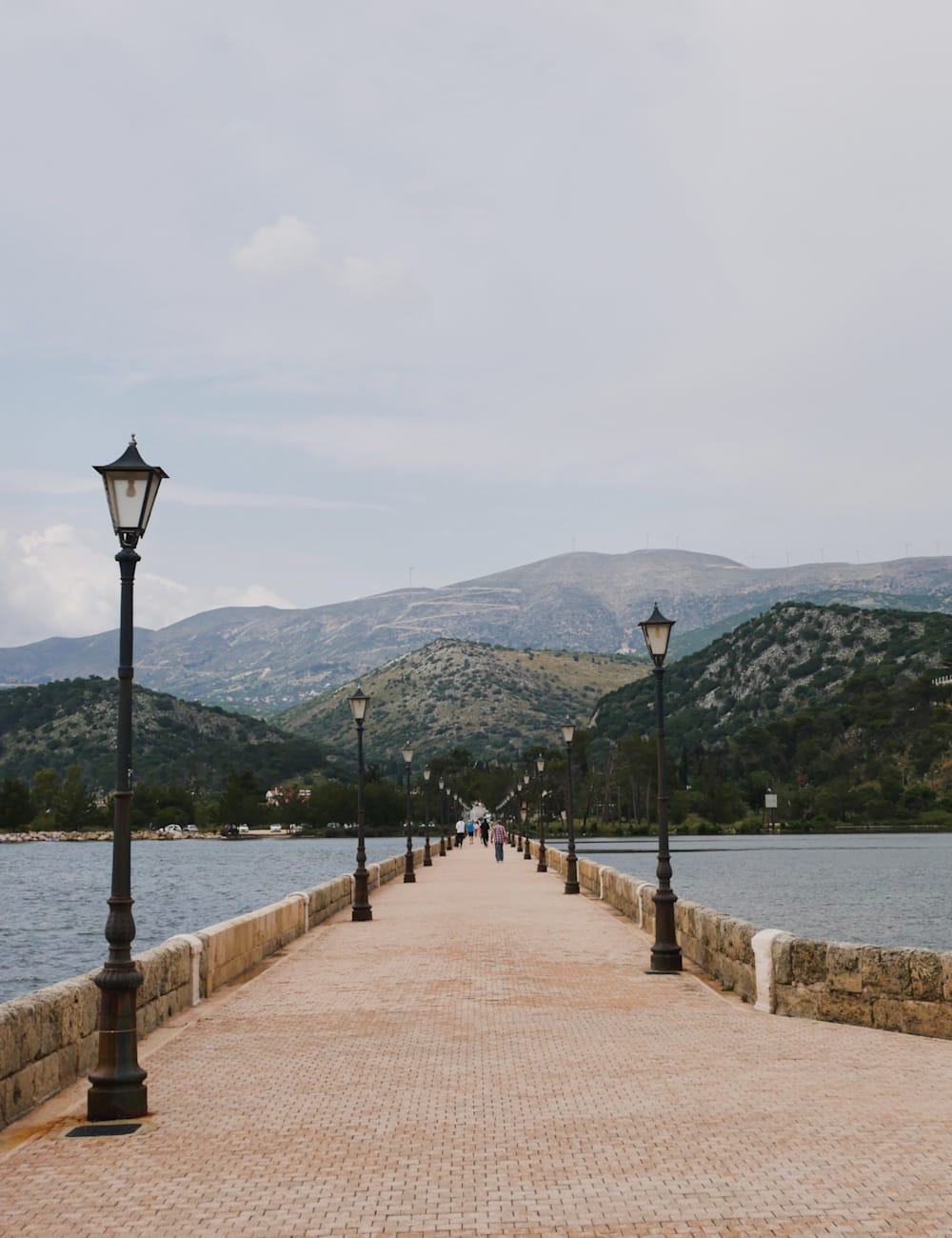Dionysis is a man so immediately warm and welcoming I almost go in for a hug as he greets me at the airport. But he’s concerned. I appear to have brought the British rain with me.

In fact, London had basked in blissful beer-garden weather for several days before my obscenely early flight but I don’t tell Dionysis this and instead offer a rueful apology as he loads my luggage into his Merc.
Kefalonia, the largest of the Ionian islands, has a richer palette than the sugar-cube white and Yves Klein blue of its Cycladic siblings. As we wind uphill, we pass pink-fronted shops and caramel coloured churches, but the top of Ainos, the camo-green mountain which stands as the island’s highest, is nowhere to be seen, wrapped instead in a tight cloudy embrace.
The dense pine forests that cling to its sides are, Dionysis tells me, rare black pines once raided by the Venetians to build the foundations of the floating city. ‘They’ll be fine in this drizzle then’ I offer, lamely.

While it might not exactly be in show-off mode as we drive, Kefalonia is being talked about in reverent terms by in-the-know island hoppers as this summer’s must-visit. Which? even hailed it as Greece’s best in a recent poll, and while such things must be taken with a pinch of the proverbial, it’s hard to argue with their reasoning: sublime sandy beaches, high-rise-free scenery, and a genuine sense of solitude.
It’s a miracle it’s here at all, really. In the August of 1953, an earthquake measuring 6.8 on the Richter scale devastated the island. ‘That was one of the few’ says Dionysis pointing out the unscathed ancient castle of Agios Georgios still peering proudly from a distant hillside.
I wonder, as we park up at Eliamos, what once stood here but I’m distracted trying to glimpse Mount Ainos through the clouds and forget to ask. I know that the buildings are brand new; I’m one of the first guests in fact. But the mottled terracotta roofs, mosaic limestone walls, and wild-meadow gardens that stretch down towards the water belie their boxfresh nature.

Perked up after a mint-lime cooler and a fruit platter, I survey my new living quarters. Owing to its blockbuster Ionian Sea views, life is presented – for those who know their aspect ratios – in 21:9 at Eliamos. Truly cinematic widescreen. When you throw back the curtains, you half expect to see one of those certification screens declaring a rating of ‘Universal: suitable for all’.
It’s not in glorious technicolour just yet but it beguiles in a whole different way. I stick on something suitably moody (local-ish boy Vangelis does the trick), pour myself a glass of kindly gifted local wine, and stand out on the terrace watching raindrops hit the pool.
It’s soothing, sure, but nothing compared with what follows when I stroll back uphill to the wellness centre for an hour-long full-body massage which somehow unknots knots I didn’t even realise were knotted.

Afterwards, I take a seat for dinner and gaze out at a sky full of stars between mouthfuls of grilled octopus and the very tenderest of lamb. Weather be damned, this is contentment, I think. Then ‘I’m Only Happy When It Rains’ plays and I laugh quietly to myself.
The next morning we return to regularly scheduled programming. The sun tempts me out to my pool at a dawn-ish hour I try hard to avoid in normal circumstances and presents me with that Ionian view – the foot of Ainos framing things neatly to my left, the edge of Zakynthos in the distance; the occasional boat bobbing past – in such blue clarity that an audible ‘whoa’ escapes my lips.
At breakfast I take a seat on the terrace facing the same view in case, I don’t know, I miss something? That I don’t distractedly spill egg yolk or (delicious) locally made honey down myself is something of a miracle. But I can’t stare at this view all day, I lie to myself, and I make an attempt at exploring more of the island.

The path down to the nearest cove has been rendered a little treacherous by the uninvited rain, so I take a slightly longer route through the pines and down some vertiginous hairpin paths to a deserted Livathou Beach, where the soundtrack comprises exclusively of lapping waves, rustling trees and the odd distant barking dog.
I take a taxi ride north into the capital, Argostoli. The town has two claims to fame: 1) the De Bosset bridge, named for its Swiss engineer and the longest stone footbridge in the world, and 2) loggerhead turtles, who feed in the warm lagoon waters. And strolling the former affords good glimpses of the latter. ‘Turtles! In Europe!’ I text with a video of one to a friend. ‘Well that is just MAGICAL’ comes their reply. I’m inclined to agree.

I walk back along the harbourside admiring the jumble of buildings for their characterful colours – the rebuild from the earthquake is particularly impressive here – and the almost Alpine views of the hills on the other side. I stop for a beer in the main square where a father and son are playing football and stray dogs are sleeping curled up in the shade.
It’s as pure a holiday scene as you could wish for, but I fast get restless. That view has become my mental screensaver and I’m compelled to get back to it for sunset.
And so, as my return ride takes me into postcard pretty villages, past coastal paths to crowd-free coves, through unspoilt, untouched, wild land (imagine an Ionian Menorca), I realise the irony: this is an island truly worth discovering, yet the views at Eliamos might just prevent you from doing so.
Find out more about Eliamos or explore our full collection of Kefalonia hotels
All photography by the author
Richard MacKichan is Mr & Mrs Smith’s editor-in-chief and has also contributed to the likes of Mr Porter, The Gentleman’s Journal, Gossamer, Grazia, BA’s High Life, Eurostar’s Metropolitan, The Independent and more. Most people call him Richie.

